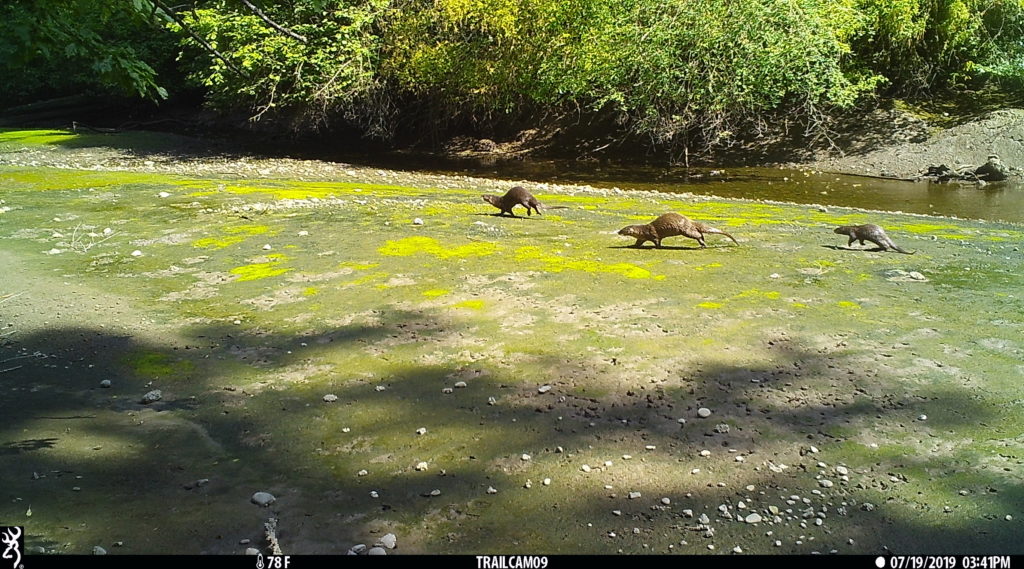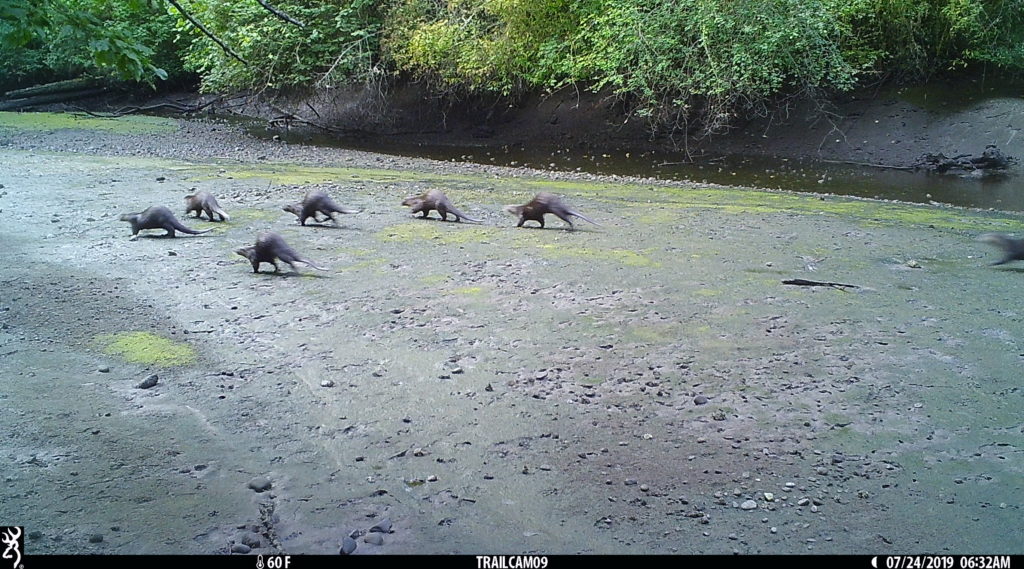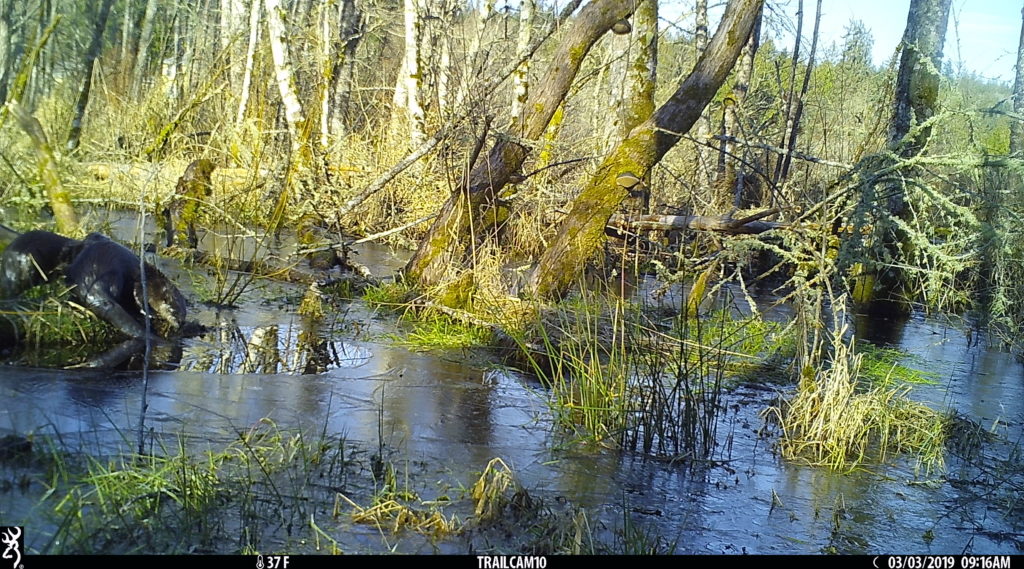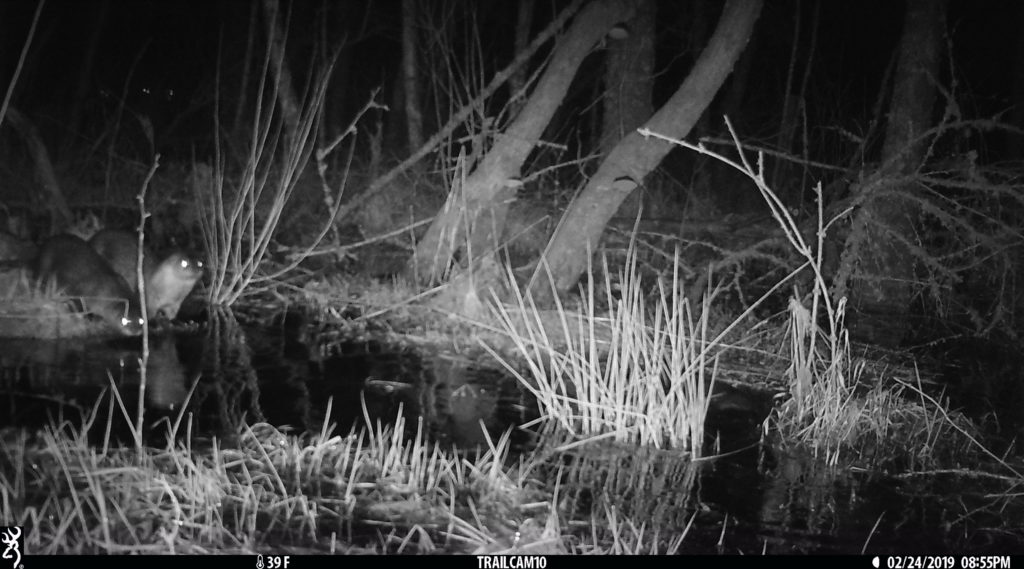Species Spotlight: River Otter (Lutra canadensis)

A small family group of otters spotted by our remote wildlife camera romping along the estuary of Little Manzanita Creek during low tide.
Did you know river otters can hold their breath for up to 8 minutes while under water? They can even close their nostrils to keep water out during long dives. The playful river otter spends about two thirds of its time on land, but is an expert swimmer so it can use the water to travel and seek out food. These mammals have long, slim bodies with short, webbed feet and long, strong tails – allowing them to swim upwards of seven miles per hour and dive to depths of 60 feet!

A group of seven otters using the same crossing as above! Notice how long their tails are.
As you probably know, the waters around here can be quite cold! To combat the often frigid water temperatures, river otters have a thick protective coat. In order to keep their fur water resistant and properly insulating, otters have to groom themselves frequently. They wash themselves after every meal!

A pair of river otters hanging out in one of the many wetlands on the Island. River otters can live near salt water or fresh water, or both!
Often spotted from the many shorelines of Bainbridge Island, the river otter is sometimes mistaken for its significantly larger cousin the sea otter. But what’s the difference between the two? The most obvious difference is size: a river otter is only about half to a third of the size of a sea otter. River otters swim with their bellies down, while sea otters float on their backs at the water’s surface. Sea otters also have short and stubby tails in comparison to those of river otters. Sea otters do not reside in Puget Sound, they are only found along the coast and occasionally in the Strait of Juan de Fuca. River otters are found all over the state, and across much of North America!

If you see a pair of spooky glowing eyes staring at you from a wetland, it could be a river otter.
River otters are pretty adaptable and can live in nearly any habitat near water as long as there is enough food around. These creatures have high metabolisms and have to eat frequently. Luckily, they will dine on a wide variety of aquatic animals (such as fish, shellfish, and frogs), small mammals (like our pesky invasive rabbits) and sometimes even aquatic plants. Their homes are called dens, and they can make them along the edges of waterways or inhabit those left behind by other den-dwellers in the area.
Weasels, minks, badgers, and otters are all a part of the group of mammals called Mustelids. All Mustelids have scent glands that are used to mark their territory. For river otters, these glands are near the base of their tails and leave behind a powerful musky smell.
Sources
